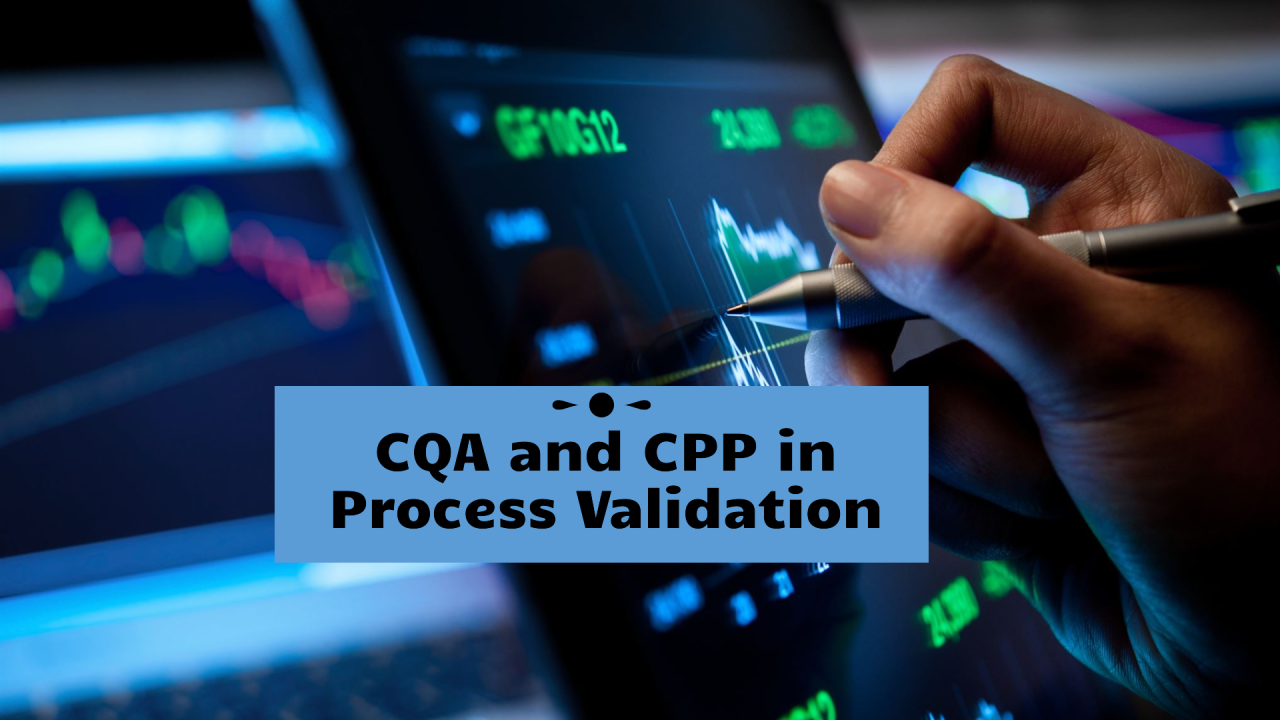
Critical Quality Attributes (CQAs) and Critical Process Parameters (CPPs) in Process Validation
Syed Danish
Quality Assurance Manager @ Jamjoom Pharma | Quality Management Expert | SAP QM Power User | Lead Auditor
?“Process validation is the means of ensuring and providing documentary evidence that processes (within their specified design parameters) are capable of consistently producing a finished product of the required quality.”
This definition of process validation not only reflects regulatory expectations—by emphasizing the need to produce a product that meets specific quality standards—but also gives guidance to achieve this goal (in line with those expectations).
Here, the term "…….specified design parameters" refers to Critical Process Parameters (CPPs), which are key process variables that must be controlled to ensure the desired quality. Meanwhile, the phrase "…….required quality" refers to Critical Quality Attributes (CQAs)—the measurable characteristics that ensure the product’s safety, efficacy, and purity. In short, CPPs are the conditions that need to be managed during production, while CQAs define the quality benchmarks the final product must meet.
Critical Quality Attributes (CQAs) and Critical Process Parameters (CPPs) are integral to maintain product quality and are extensively managed throughout the product lifecycle. Regulatory agencies provide a structured approach for identifying and controlling these critical factors. Knowledge management and risk assessment throughout product lifecycle are also tools to identify CPPs and their impact on CQAs.
CQA and CPP are not only related to product but same concept can be applied to systems as well. However, for now we will be discussing these concepts in reference to process performance qualification or process validation of products.
Critical Quality Attributes (CQA)
A CQA is a physical, chemical, biological, or microbiological property or characteristic that should be within an appropriate limit, range, or distribution to ensure the desired product quality. These attributes are usually regulatory expectation for the medicinal products.
These attributes can include:
In general, product CQAs are derived from the quality target product profile and/or prior knowledge of the product and process development.
领英推荐
?Critical Process Parameters (CPP)
A CPP is a process parameter whose variability has an impact on a critical quality attribute and therefore should be monitored or controlled to ensure the process produces the desired quality. The manufacturing process development program or process improvement program should identify any critical process parameters that should be monitored or controlled (e.g., granulation end point) to ensure that the product is of the desired quality.
Here are few examples of Critical Process Parameters (CPPs) commonly monitored in pharmaceutical manufacturing:
CPPs are identified through a deep understanding of the relationship between process variables and product quality. Tools such as Design of Experiments (DoE) and statistical analysis are often used to establish these relationships. Regulatory authorities expects that each CPP be defined and documented, with a thorough justification based on scientific evidence, demonstrating its importance in maintaining CQAs.
During technology transfer, it is important to ensure that all CPPs and CQAs are properly documented and transferred from the development team to the manufacturing team. In cases where technology transfer documentation is incomplete, it may be necessary to revisit development records to ascertain the critical parameters and their relationships to the CQAs. Each decision related to CQAs and CPPs should be supported by robust scientific data and risk assessments. Furthermore, the personnel responsible for validation should not designate what is critical without the input of subject matter experts.
During process validation, we must establish that any process with defined CPPs will result in desired CQAs consistently. A Proven Acceptable Range (PAR) is typically established for CPPs. This range represents the limits within which a process parameter can vary without negatively impacting the CQAs.
During process validation, it is advantageous to use statistical tools (e.g., regression analysis, t-tests, ANOVA) to confirm that CQAs remain stable as long as CPPs remain within the defined PAR.
As concept of process validation extends beyond the traditional notion of proving a process can consistently produce a product with predetermined characteristics, modern process validation encompasses ongoing monitoring and control of CQAs and CPPs throughout the product lifecycle. It is recommended to have established procedure for Continuous Process Verification (CPV) as a strategy to ensure process robustness over time. CPV allows for real-time monitoring of both CQAs and CPPs during the commercial production of a product, ensuring consistent product quality. This approach differs from traditional batch-based validation by emphasizing ongoing data collection and analysis to verify that the process remains within the control limits.
In conclusion, Critical Quality Attributes (CQAs) and Critical Process Parameters (CPPs) are the cornerstones of effective process validation, ensuring that products consistently meet the required quality standards. By establishing a clear relationship between CPPs and CQAs, manufacturers can control key process variables and assure product quality, safety and efficacy.
Manager Microbiology at Abbott Laboratories
1 个月Insightful
Pharmacist | Quality Assurance | Poet
1 个月Very informative
Quality|Regulatory Compliance|Medical Affairs|Research|Public Health|Physician|
1 个月Insightful